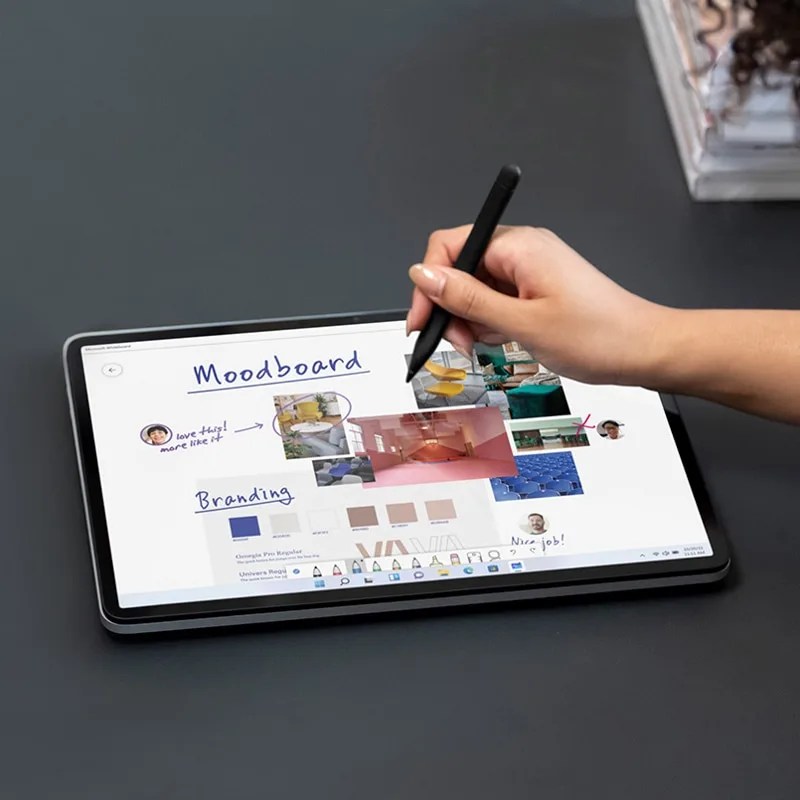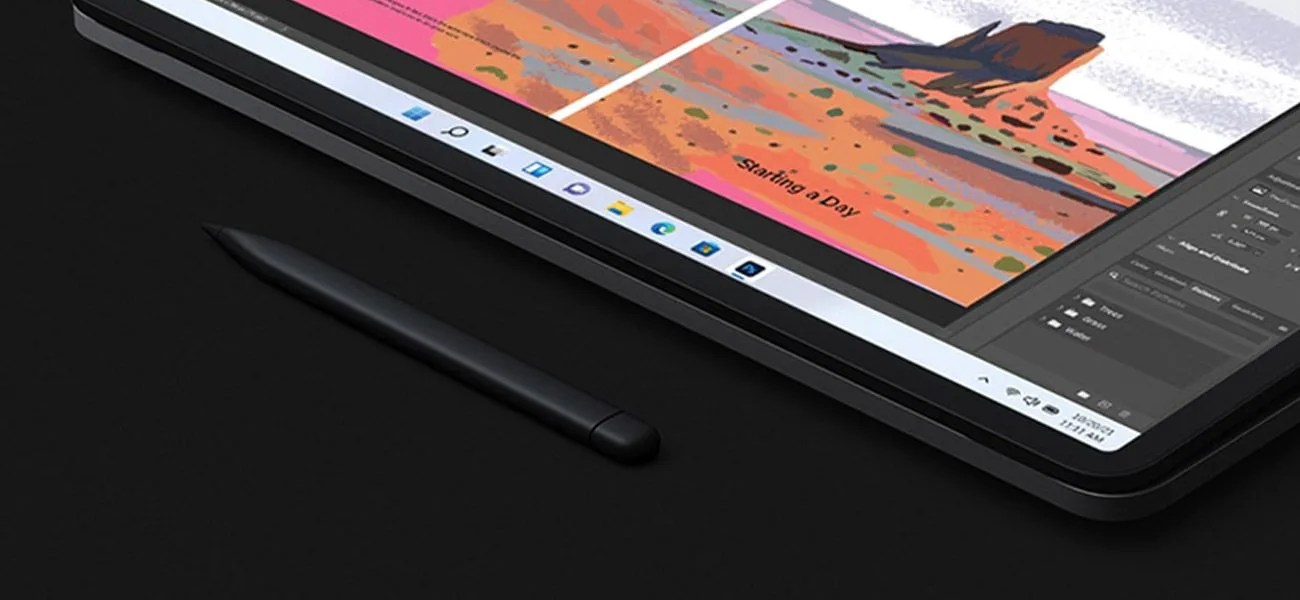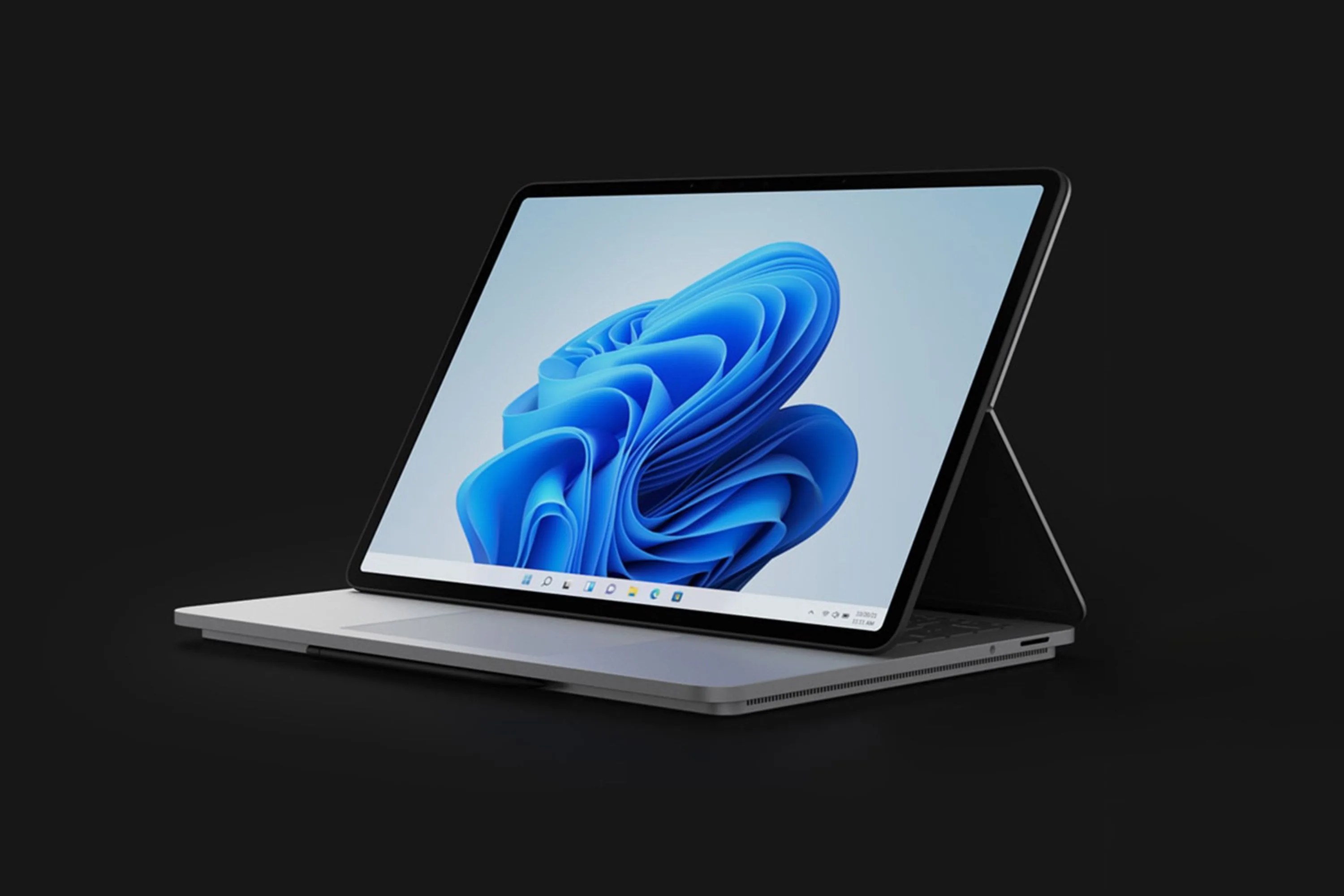Today at a virtual event, Microsoft announced the latest products in its Surface line ahead of the upcoming release of Windows 11 this fall. Present were whole host of flagship products from the Surface Pro 8, the latest in Microsoft’s flagship convertible line, to the Surface Duo 2, the software giant’s second swing at a folding phone with a hinge. But the biggest announcement, and the one that best sums up Microsoft’s broader strategic mission, is the new Surface Laptop Studio.
The latest addition to Microsoft’s Surface Laptop line, the Studio marks an evolutionary divergence from its forbears. The previous king of Microsoft’s laptop lineup, the Surface Book, had a completely detachable screen, complete with a hefty keyboard attachment that packed extra guts to increase performance power when the two were Voltroned together. The rest of Microsoft’s “Surface Laptop” line, meanwhile, has a traditional, non-transforming form factor.
 Microsoft
MicrosoftSurface Laptop Studio
-
$1,599.99 (13% off)
With the Surface Laptop Studio, Microsoft is taking inspiration from its enormous monitor-sized all-in-one Surface Studio to inform the future of its line of top-tier laptop-like devices. Instead of detaching (or just folding down) the Surface Laptop Studio’s screen pivots forward in front of the keyboard and can even lie flat. But its screen is just 14.4 inches instead of 28.
Sporting a quad-core 11th Gen Intel H35 processor, up to 32GB of RAM, and an option for discrete graphics in the form of Nvidia’s GeForce RTX3050 Ti , the Surface Laptop Studio is angled towards the high performance crowd and, notably, not really trying to be especially thin. Its significant terrace of cooling vents is clearly visible at a glance. Its overall thickness of just under 19mm (just shy of .75-inches) is by no means dictionary-grade girth, but it is a bit chunkier than the 2020 M1 MacBook Pro 13’s just over 15mm (just over .6-inch) thickness — which is all but destined to decrease, maybe significantly, when new MacBook bodies designed from the ground up for the M1 chip drop later this year.
And that’s because the Surface Laptop Studio is a different kind of device, attempting to succeed on different terms. Where Apple has taken a turn towards mobile with its in-house M1 chips build on ARM’s tablet-first architecture, Microsoft is taking the opportunity to lean the other way and cast its lot with Intel and make a device that’s (slightly) more at home on kitchen tables than in messenger bags. Granted, this particular transforming trick dates back to the early days of the first convertible Windows 8 laptops, but it’s still a comparatively novel approach to building a great laptop versus “let’s make it as thin as humanly possible.”

